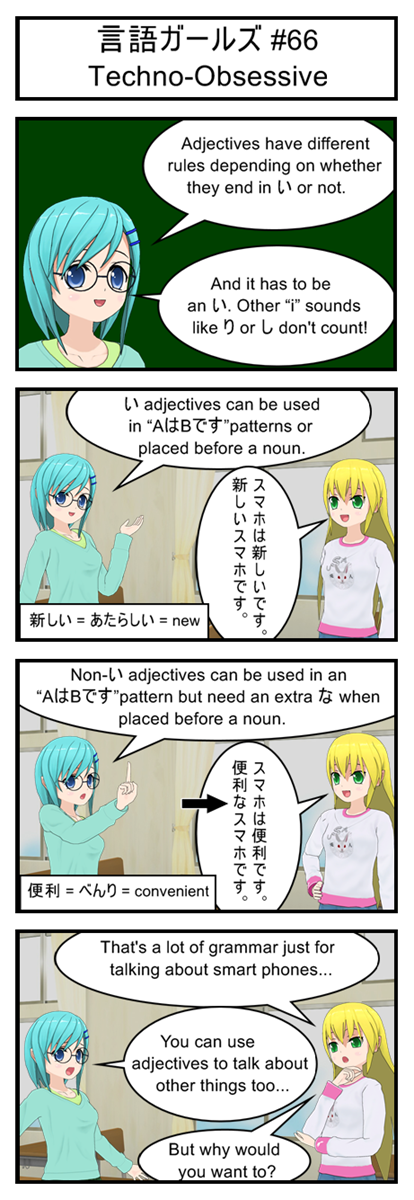
Some common adjectives actually come in both “i” and “non-i” flavors. For example, “small” can be written as both “chiisai” and “chiisa na”. In my limited experience the “i” versions are used more often than the “na” flavors, but it’s not like I’ve ever actually counted.
Vocabulary
新しい = あたらしい = new
便利 = べんり = convenient, useful
Transcript
言語ガールズ #66
Techno-Obsessive
Blue: Adjectives have different rules depending on whether they end in い or not.
Blue: And it has to be an い. Other “i” sounds like り or し don’t count!
Blue: い adjectives can be used in “AはBです”patterns or placed before a noun.
Yellow: スマホは新しいです。新しいスマホです。
Blue: Non-い adjectives can be used in an “AはBです”pattern but need an extra な when placed before a noun.
Yellow: スマホは便利です。便利なスマホです。
Yellow: That’s a lot of grammar just for talking about smart phones.
Blue: You can use adjectives to talk about other things too…
Yellow: But why would you want to?